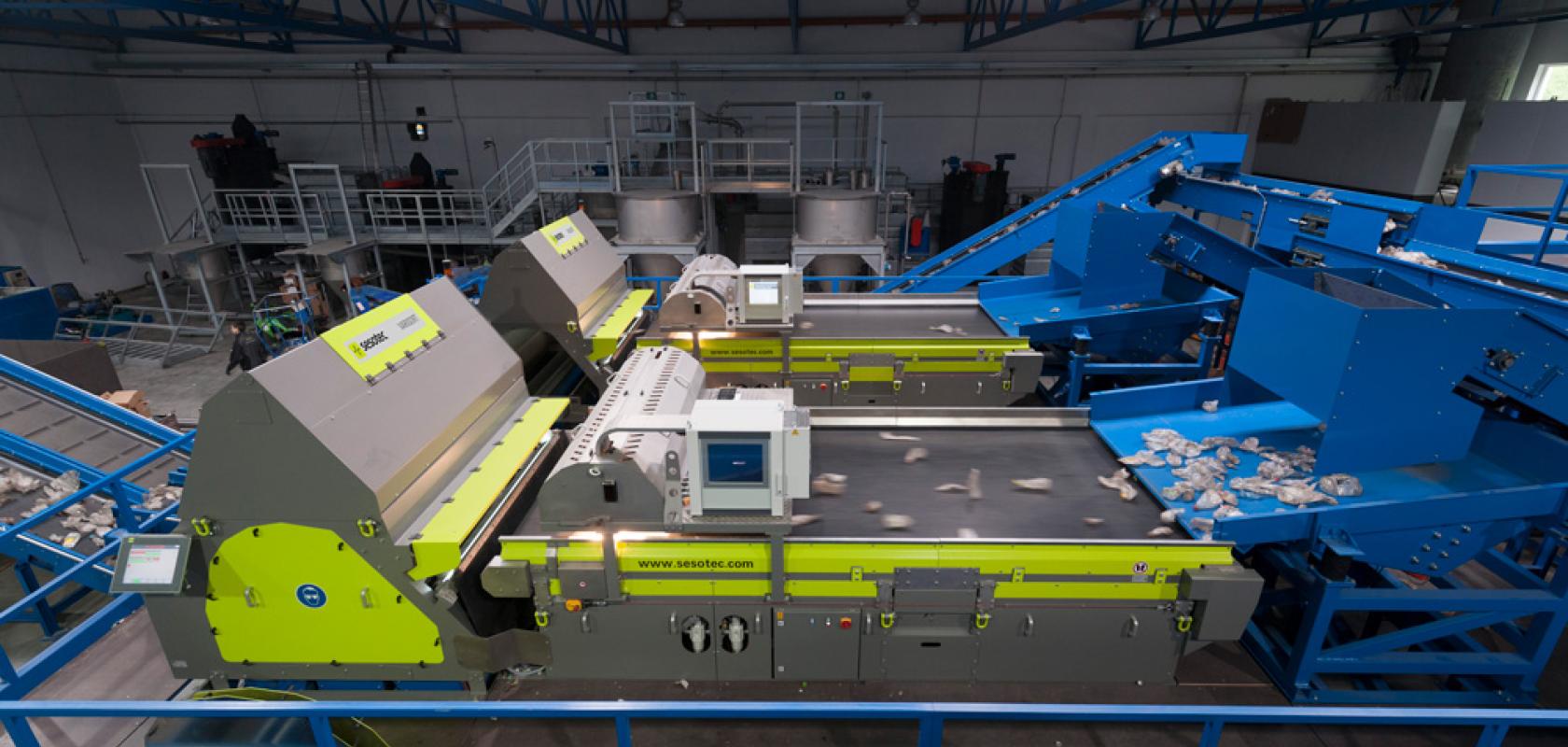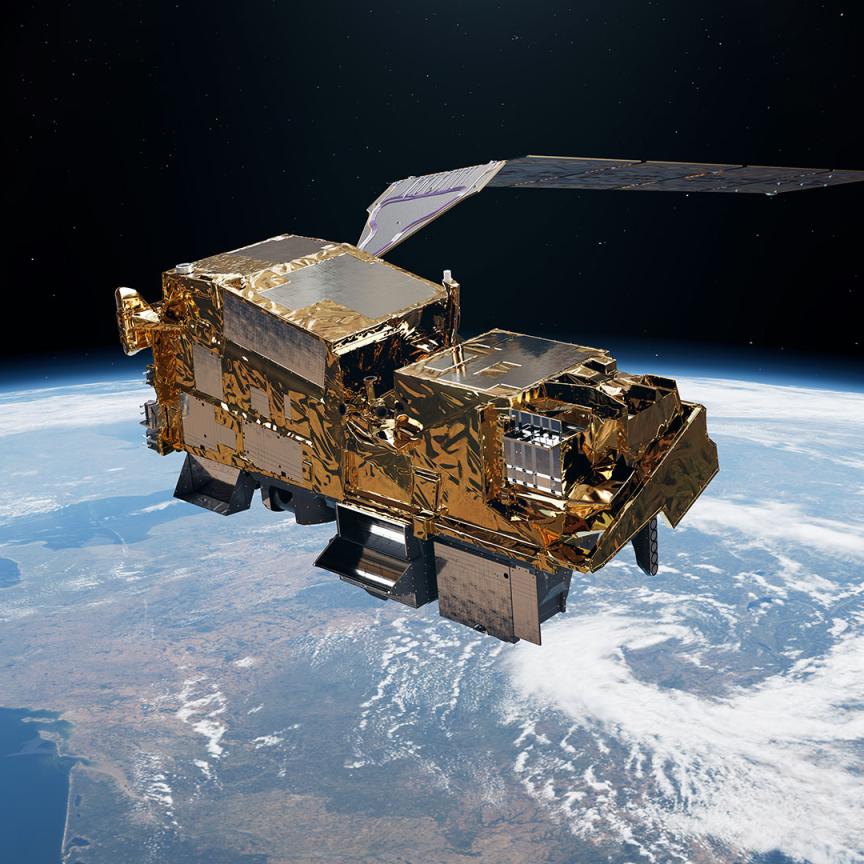Of the 8.3 billion tonnes of plastic waste that has been produced since the 1950s, just nine per cent has been re-used1.
The plastics waste problem has hit headlines repeatedly over the past few years, with reports of plastic disturbing ecosystems in some of the most remote environments on our planet, including the Arctic.
Governments across the globe are recognising the need to change this and are introducing laws to improve recycling rates. Proposed EU legislation, for example, sets minimum targets for recycled content in plastic packaging, such as 30% for drinks bottles by 2030 and 65% by 2040.
Waste is therefore becoming an important raw material as companies battle to meet these critical targets. And, with the price of crude oil – and therefore virgin plastic – increasing due to rising crude oil costs, recycled material is becoming even more attractive.
But there is a reason why plastics aren’t recycled at the same rate as paper, glass or metals: the sheer amount of different packaging products on the market makes it challenging to identify, separate and sort.
Imaging technologies such as infrared, hyperspectral and CCD line cameras have been crucial in enabling reliable detection and sorting of plastic waste, but the recycling industry faces unique challenges with plastics that the imaging industry could continue to help it overcome.
Black plastic recycling
Sesotec is an OEM that develops sorting systems for recycling and has more than 2,300 instruments installed worldwide today.
The company’s machines feature a range of cameras and sensors that are tailored depending on the type of material being sorted, but one material that pushes technological limits – and one that Sesotec says the photonics industry could help support – is black plastic.
“Black plastic is one of the biggest problems in recycling,” said Tobias Eder, Sesotec’s Manager of Application Engineering & Technology, during a recent EPIC online technology meeting on plastic sorting, recycling and waste management.
Most black plastic packaging – widely used in electronics, food containers, plastic bags and the automotive industry – is coloured using carbon black pigments that prevent typical technologies employed in sorting instruments, such as near-infrared (NIR) sensors or CCD line cameras, from detecting it reliably.
The company is looking for a reliable technology that can detect black polymers, with a detection accuracy comparable to near infrared, Eder said. “At the moment, we only have some capability using mid-infrared sensors but it is not at the same level of NIR, and they have to be used in combination with other sensors.” He added that, while there have been research/industry projects focused on this application, “there are no real results that are possible at the industrial scale at the purities our customers need”.
In addition to sensors, the company is looking for high-power LEDs in the 1,300-1,900nm wavelength to permit the detection of darker plastics, but to also allow it to replace halogen bulbs and reduce the power consumption of its machines.
In its machines, Sesotec uses both CCD line scan cameras and NIR sensors. The CCD cameras can detect by shape, colour and separate coloured materials from a clear fraction. They have a resolution of up to .075mm and can be taught to read around 17 million colours in combination with different illumination optics. Varying lighting options can be used depending on the application – for example, transmitted light detects transmission in a transparent material, or a top light detects the reflection of opaque material.
For NIR detection, the company uses a camera developed in-house. NIR can be used to detect flame retardants and PET trays; it can differentiate LDPE and HDPE; detect various ‘bottle/label combinations’ or distinguish between PET and PETG (bottles and flakes). A ‘plastics library’ can be adapted to specific applications and types of plastic.
Sesotec hopes to integrate more AI in the future, but needs more computing power to incorporate this at a reasonable price, which Eder hopes integrated photonics could help support. AI-assisted detection and sorting processes would shorten the time between detection and the sorting of the material, increasing output. ‘I know everyone is talking about it right now, but AI will bring a huge benefit,’ Eder said.
The company is offering organisations with capabilities that could meet their needs the opportunity to test their products in an industrial environment, either at the firm’s test centre or at a customer site. “You will get detailed feedback about our findings, what needs to be improved and what was good,” Eder said. Companies can also cooperate in research projects, he added.
Improving recycled plastic purity
In addition to detection of black plastic, another challenge facing plastics recycling is obtaining a high enough purity so recycled content can be made into high-quality products that meet performance and functionality requirements.
The mix of different types of polymers used today makes this difficult, as they contain different chemical compositions as well as different additives such as dyes and flame inhibitors that give a plastic product its specific properties.
Sorting these different plastics and removing impurities is important because otherwise products made using recycled plastics might not perform at the level desired.
A Danish research/industry project, called New Hyperspectral Camera technology for material identification (NewHC), is developing a hyperspectral camera that will make it much easier to recycle plastic materials. The technology’s spectral resolution and range will be higher than existing products on the market to reveal unwanted fire retardants and pigments in the plastic that may be banned or harmful, so that they can be removed before recycling.
"It's important that we separate plastics into as pure fractions as possible if we are to increase the rate of recycling. At least 95% purity in the plastic fractions is currently required; preferably higher. For this reason, we’re aiming to automate fast and efficient plastic recognition with this technology. By doing this, we hope we can push the boundaries for future recycling of plastic waste and thereby reduce the need to make new plastics," said Bjarke Jørgensen, Head of Research & Development at Newtec Engineering .
Aarhus University (AU), University of Southern Denmark (SDU) and Newtec Engineering are aiming to develop the hyperspectral camera with a spectral range from around 400nm to 1,900nm and a desired resolution of 2nm.
"It’s an extremely ambitious goal for this technology, and it places strict demands on the optical components in the camera technology. Besides a uniquely high resolution, we’re also aiming to optimise the camera optics for light spectra that are crucial for analysing plastics," said Associate Professor Mogens Hinge, from the Department of Biological and Chemical Engineering at Aarhus University.
Once the technology has been developed, it will be installed in a specially constructed waste separation plant in collaboration with Newtec Engineering.
“We have the first camera prototype in our lab now and are excited to see what we can get out of it,” Professor Hinge told Imaging and Machine Vision Europe. “We sincerely hope that other camera manufacturers and researchers also work on making better cameras for plastic sorting. But, to the best of my knowledge, there are no cameras on the market that have the specs we are aiming for.”
One of the demanding technical tasks is developing image frequency, i.e. how many images can be acquired per second and how fast the images can be processed and decisions made based on the data. Speed is crucial as tonnes of material is processed each day in recycling plants, of which every square metre needs to be analysed. “As an example, in the current configuration, we are obtaining 1.3 million spectra per 10-12cm of conveyor-belt movement. Therefore, processing these data amounts fast enough is, besides the optics and sensor tech, key to success. The faster we can process the data, the faster the conveyor belt can run and the higher throughput of recycled plastics,” said Hinge. The team plans to use AI to help it analyse the spatio-spectral signals.
The sensor can detect light from 415 to 1,850nm, and such a broad spectral range is challenging the current optics, Hinge explained, as most materials are not transparent in both the UV over the visual and into the infrared spectral range. “This is also felt with the camera prototype as the current optics (lenses, etc) are not optimal and we do not have full illumination of the sensor yet,” Hine noted. “This is, however, one of the tasks that we expect to solve via this project.”
The NewHC project is supported by Innovation Fund Denmark (grant no: 2105-00002B) Newtec, University of Southern Denmark, and Aarhus University. It has a total budget of DKK 11.3 million and it will run for three years.
Closing the loop
A trend in the plastic industry is the move towards closed-loop recycling, Sesotec’s Eder said during EPIC’s meeting. For example, many companies, such as Coca Cola, are aiming to produce new bottles from their old bottles, Eder added. The drinks producer is hoping to make its bottles 100% recyclable by 2025.
One way companies are closing the loop on plastic packaging is through digital watermarks – imperceivable postage stamp-sized codes printed on plastic packaging – which contain information about the packaging material that can be detected by cameras. This is particularly beneficial in the case of bottles and food-grade packaging, which have more stringent requirements, and so being able to easily identify these plastics will improve the rate at which they are recycled. The watermarks also allow companies to track their products through their life cycle, helping to trace the rate at which they are recycled and analyse their position within the circular economy.
A project, called HolyGrail 2.0 project, is testing implementation of digital watermark technology at first semi-industrial and, at a later stage, industrial scale.
This involves installing new prototype machines, equipped with high-resolution cameras to detect and decode the information carried by the digital watermarks in sorting and recycling centres.
The team, which includes AIM, the European Brands Association, along with The Alliance to End Plastic Waste, will be assessing how fast and how accurately the watermarks can be tested using existing technology, and how this improves the efficiency of sorting.
It is hoped that, if intelligent sorting increases the purity of the recycling feedstock, plastic waste can then enter different recycling streams, such as mechanical or chemical recycling. This ultimately results in greater amounts of recycled plastic waste and improves the overall quality of recyclates.
In addition to marking plastics entering the plastics supply chain, altering the chemistry of black plastic material could improve the rate at which it is recycled.
Lanxess, a specialty chemicals company based in Cologne, Germany, is producing a black pigment for colouring black plastic that reflects 20% of near-infrared radiation. This enables plastics to be identified efficiently and cost-effectively with the aid of NIR detectors like those used for sorting waste. Plastic packaging coloured with carbon black used in large part today, does not reflect any radiation and therefore cannot be detected in sorting plants. The company hopes the new iron oxide pigment could make a decisive contribution to recycling black plastic packaging.
References
1 Roland Geyer et al., Production, use, and fate of all plastics ever made.Sci. Adv.3,e1700782(2017).DOI:10.1126/sciadv.1700782


